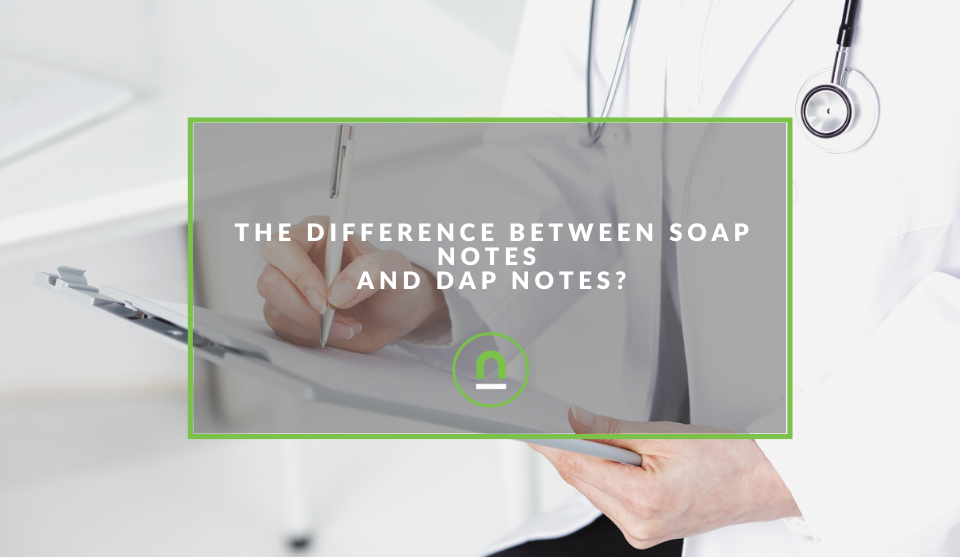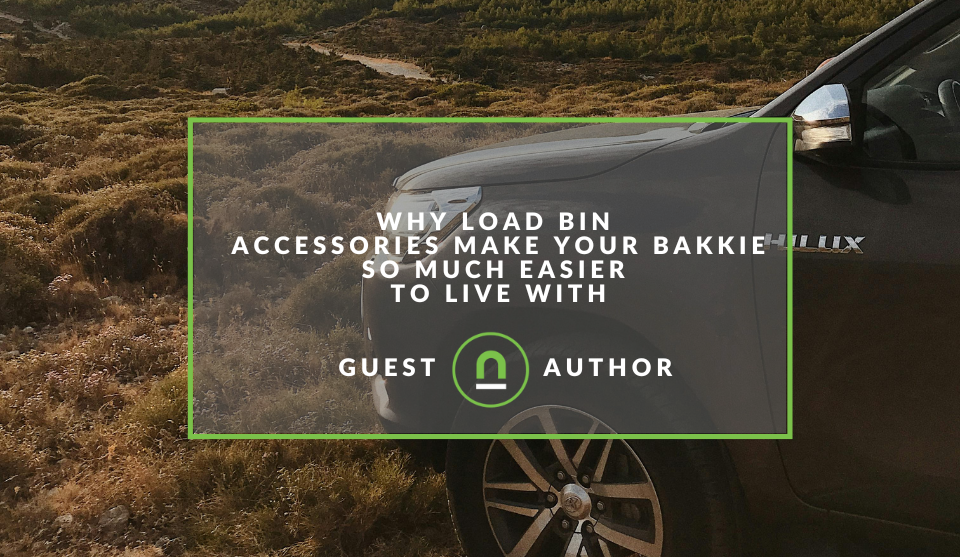Recent posts

nichemarket Advice
The South African VAT Threshold Chokehold
05 December 2025

Doctors Orders
The Difference Between SOAP Notes and DAP Notes
02 December 2025

Petrol heads
Why Load Bin Accessories Make Your Bakkie So Much Easier to Live With
26 November 2025

Alarming
What Is The Part Time Job WhatsApp Scam?
25 November 2025
Popular posts
Extravaganza
Trending Music Hashtags To Get Your Posts Noticed
24 August 2018
Geek Chic
How To Fix iPhone/iPad Only Charging In Certain Positions
05 July 2020
Extravaganza
Trending Wedding Hashtags To Get Your Posts Noticed
18 September 2018
Money Talks
How To Find Coupons & Vouchers Online In South Africa
28 March 2019
What Does An SEO Optimised eCommerce Product Detail Page Look Like
18 July 2019 | 0 comments | Posted by Che Kohler in Shopaholics
Having an eCommerce site and managing it is a time-consuming job, with all the on-site and behind the scenes work, you can quickly spread yourself tin and start to cut corners.
There are plenty of eCommerce sites online all competing for consumer sales and for those lucky enough to sit pretty in organic rankings they're racking in the sales, while the rest are forced to use Google Ads or other performance marketing tools to get the same results.
There’s no question that ranking higher than your competitors on Google is a must for any eCommerce site. When you're competing for queries that Google regards as your money or your life it can become pretty cutthroat as Google wants to ensure any results it returns where users intend on making a transaction are as reliable as possible.
Optimising your eCommerce site for SEO
Getting an eCommerce expert to review and work on your website can be expensive, and if you don’t know the SEO tips and tricks that will get your e-commerce site to the top, you're stuck with one of three options.
- Pay an SEO
- Pay for Google Ads
- Miss out on clicks
If you’re missing out on clicks, you’re probably also missing out on sales. But fear not, if Whether you’re just getting started with a new website or improving an existing site this guide will help you get your eCommerce store up and running with Google search and ensure that you begin to attract a lot more targeted traffic over time.
An SEO optimised product page
So how do you start optimising your eCommerce product pages to ensure they're the best option around and differentiate yourself from your competitors? Well, you have a few ways to do, so let's go through the checklist together and see what you can add to your product page arsenal for better performance.
Page title
A page title is the first touchpoint the user's eyes and click comes into contact with on any Search Engine results page and its importance should never be underestimated.
To craft an ideal page title, you will need to look at including an action keyword like Buy, your product name and any other compelling text into a 55 character limit along with your brand name, if possible.
Creating a compelling page title isn't the most effortless balancing act but for those who can create compelling titles will see a dramatic improvement in their click-through rate
Meta description
Your meta description gives you about 155 - 160 characters to play with and in this bit of text displayed on a search results page you should focus your attention on using secondary, long trail or latent semantic keywords you think would be a popular search term.
Remember to let the user know they can purchase online along with any other USP's such as free delivery or same-day delivery to try and attract the click.
Schema markups
Schema markups are a language that allows you to designate certain data to search engines as information of specific importance to searchers. These markups often get scrapped and added to your Google search results to provide a richer experience in SERPs (Search Engine Results Pages) and assist in attracting click-throughs which also indirectly improve rankings over time.
Product
Data that can be marked up and pulled into search results include:
- Price
- Price range
- Promotional price/offers
- In stock or out of stock
Ratings
Rating data that can be pulled into search results.
- Star rating
- Overall rating
- Number of ratings submitted
Breadcrumbs
If you want to establish an information architecture and indicate to users where they are on your site and where each page's relevance lives in the hierarchy then breadcrumb is a great option.
It also an important interface navigation function and should be standard on every site, which is why Google offers a markup language for this UX element.
Product variants
Product variants pose an interesting search dilemma for organic search as you don't want to create duplicate content based on certain keywords and could be penalised for spam but you still want to leverage a number of search variations. There is no one way to approach this and each CMS and product set up requires different considerations, in some case product variant pages, are needed to be indexed separately, sometimes they can be created but can be canonicalised, and other times they can be consolidated into one page.
It really all depends on how your primary users use search engines when looking for your specific product.
Images
As the internet becomes more media-rich, medium images continue to play a vital role in the sale of eCommerce products. Having a visual depiction of the product you are buying makes all the difference during the decision making the process. While high-quality pictures from numerous angles and even 360 videos are important, images aren't completely understood by search engine crawlers.
Which is why it is important to make sure your image files, image alt text, image captions and even image metadata contain variations of descriptive keywords which help Google understand what the image is about and match it to a searchers intent.
Optimised images also provide additional opportunities for visibility by indexing within Google image search where many consumers use to begin their product searches.
H tags
H tags help break down and categorise the page content and the various subcategories that make up a page. H tags also provide an opportunity to insert strategically that can help your page targetting and indexing for various search terms and search intent.
Product content
Unique content is fundamental to the success of any product page. By ensuring, you have well-written keyword-rich content you are able to target more keyword variations and latent semantic keywords for improved reach while also differentiating your page from competitors by providing a more valuable content experience.
Descriptions
A description of the product is your first opportunity to convince a customer that his product is the right one for their specific need or want.
Specifications
Depending on the product type you may have a few specifications or important details that a consumer would be interested in knowing about, these are normally short descriptive lists that give the user a quick overview of the product.
Making sure you place your specifications in a list format is the ideal way to get your message across and indicate to crawlers and users that these points are of specific importance.
User-generated content
I always encourage eCommerce site owners to create their own unique on-page content which will help differentiate themselves from competitors, but there is only so much unique content you can create on a specific product and as you scale it becomes harder and more time consuming to create unique content for your products.
One way of providing additional value and confidence in your product is via user-generated content.
Ratings
Users may not want to have their name, or details added to the site, or they might not have much of an opinion on the product but providing them with the option to rate the product simply is a great way to get additional engagement and adding trust signals to the site. Asking users to provide a rating and displaying this out of 5 stars as well as how many users rated the product is key in encouraging users to feel more at ease.
Reviews
For those users who love to share their opinion its a good idea to provide them with a space to provide feedback on product use. The more reviews you have, the more unique content you have, the more valuable your page is perceived to be when compared to your competitors.
Social media
Having an SEO optimised page requires you to hit a number of user interaction points and while external signals may not be direct ranking factors, they all attribute to crawlers recognising quality content, which is why social media signals are important to consider.
Open graph tags
The primary feature of any social media platform is its newsfeed and if your links do not provide an attractive marked up feature when shared within these platforms, then you're missing out on traffic and secondary engagement signals like comments, likes and reshares.
By adding custom open graph tags to your product pages you are able to customise the message and image seen when users or brands share your links on social media sites which assist click-through rates as well as grabbing users attention.
Open graph tags also allow you to include enticing copy that can be a/b tested and refined over time and should not be discounted as a marketing tool.
Social sharing prompts
Don't make it hard for users to share your product pages with friends and family and try to reduce the barrier and even go as far as to encourage these types of engagement signals.
By allowing them to share your product link with a single click can go a long way by having your visitors amplify your content. Including share buttons for Facebook, Twitter, Linkedin, Pinterest, WhatsApp, Messenger and even a good old fashioned email is a great way to get consumers to spread the word about your product.
Recommendations
Each user that visits your product page lands there with a different mindset, different information, different needs, different budgets, different use cases and of course come to your site via different channels. Which is why product recommendations are so important.
A highly optimised product page would attract between 2-5% conversion rate depending on a host of factors but irrespective of this, the majority of page views are not going to convert into a sale because eCommerce sites tend to leave a lot of the decision making the process to the consumer.
Since an eCommerce site has limitations that a physical store can overcome with various visual displays sales personal an eCommerce site needs to look at tapping into this by providing recommendations.
Price range recommendations
Perhaps a customer lands on a product that they are interested in but is not in their price range or they're looking for a more upscale version of the product. Your product detail page should display variations within the price range like a:
- Low tier
- Middle tier
- Upper-tier
This also gives a user an overview of where their purchase desires lie and what they should be expecting to spend when buying this type of product.
Product variation recommendations
Many eCommerce products come in a range of sizes, versions, year model, colours and textures. An optimised eCommerce page makes sure that it provides users with a way to view and explore their various variations and pick the one that suits them best. While your primary seller would be your default display, you should also make allowances for the variations you have in stock.
Upsell & cross-sell recommendations
A product purchase is not always an impulse decision, and some users will like to shop around, which is the beauty of eCommerce, it allows users to explore their various options comfortably.
An optimised eCommerce product pages should provide various purchase behaviours such as up-selling and cross-selling complementary products which can increase basket size as well as encourage conversion rates as users can have various combination baskets that appeal to their unique needs.
Content feeds
While many eCommerce sites would focus only on the product page they tend to forget that not every user is aware of the value products bring or why these products are applicable to their lifestyle or specific situations. Since a product page is designed with conversion in mind, it cannot also house various narratives about the product.
However, by adding a blog to your site and using smart, dynamic content feeds or even old fashioned deep linking you can provide users with access to supporting content they may find valuable and give them a better sense of the product.
Blog posts should not only be used to link back to products contextually, but products pages should also be seen as a way to encourage exploration of supporting content for users are yet to be convinced and are still in the research phase.
By providing them with answers in various narratives without them having to do off-site research, you can keep them on your site longer, which is often correlated with an improved conversion rate.
I also often encourage eCommerce brands to use their blogs to host their how-to and tutorial videos on separate supporting pages instead of slowing down the load time of their direct sale pages.
Creating the perfect product page experience
While this is guide makes for an excellent checklist for options you can use to create a unique eCommerce experience, I would recommend that you don't try to force every opportunity into your pages.
Some may be more valuable to your users than others, so use your judgment wisely and remember that page load speed is still a significant factor. No sense in having all the bells and whistles when your page takes an eternity to load.
SEO is a balancing act between form and function, and I highly recommend you use this guide to A/B test elements and find the best possible solution for your potential clients. Once you find the ideal balance that works for your site traffic, you can focus on replicating a consistent, high-quality experience across all your product pages.
Protip! If you want to learn more about how eCommerce sites can improve their SEO, then check out our post - How eCommerce Sites Sabotage Their SEO
Are you looking to promote your business?
South African businesses and freelancers can create your free business listing on nichemarket. The more information you provide about your business, the easier it will be for your customers to find you online.
Registering with nichemarket is easy; all you will need to do is head over to our sign up form and follow the instructions. If you require a more detailed guide on how to create your profile or your listing, then we highly recommend you check out the following articles.
Recommended reading
If you enjoyed this post and have time to spare, why not check out these related posts and dive deeper down the rabbit hole that is SEO.
- Why Businesses Do Not Want Or Care About SEO
- 5 Reasons Why Your SEO Isn't Working
- 10 SEO Myths That Make Us Question Our Life Choices
- How To Optimise YouTube Videos For SEO
- How Your Niche Website Can Benefit From SEO
- How Community Outreach Marketing Can Boost Your SEO
- How to Improve your SEO with PPC
Tags: eCommerce , Seo
You might also like
The South African VAT Threshold Chokehold
05 December 2025
Posted by Che Kohler in nichemarket Advice
How South Africa's R1 Million Limit Keeps Small Businesses From Developing, And Why Even Adjusting For Inflation Alone Would Free Up Burdens On Small...
Read moreWhere Press Releases Live In An Age of AI
21 November 2025
Posted by Che Kohler in nichemarket Advice
How the press release landscape will be affected by the move to AI overviews in search, users moving to LLMs for information and AI summary tools on ...
Read more{{comment.sUserName}}
{{comment.iDayLastEdit}} day ago
{{comment.iDayLastEdit}} days ago
 {{blogcategory.sCategoryName}}
{{blogcategory.sCategoryName}}

